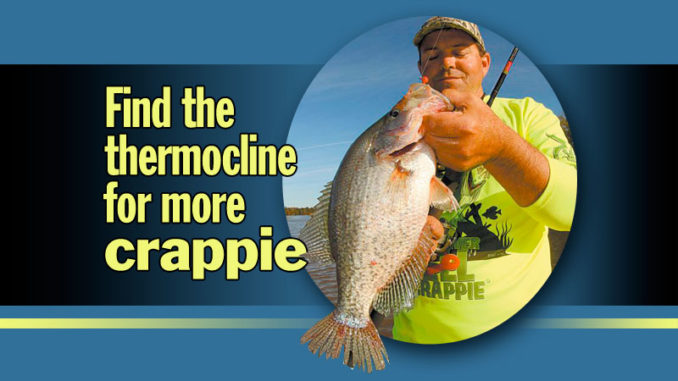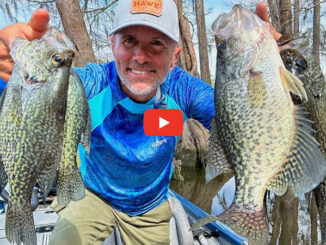
Put lures in the fish’s comfort zone, guide says
With August here, the first step to catching most species of fish is to find the thermocline, which is the depth in the water column where the temperature is most comfortable and the most oxygen-rich.
That’s where the crappie will be.
Many modern sonar units can pinpoint the thermocline quite accurately, but those with older units or without any units at all can still use the old-fashioned method — which takes a little longer, but is still just as effective as ever.
Live minnow test
South Carolina fishing guide Brad Taylor said anglers can pinpoint the thermocline by sending a live minnow down to a certain depth, say 12 feet.
Let the minnow suspend at that depth for one minute, and then reel it up.
If the minnow is dead, you need to try again, this time at 11 feet. If this minnow comes up dead, try 10 feet the next time.
When you bring a minnow back alive, remember that depth: You’ve found the thermocline, and that’s the depth you want to fish.
“It’s a pretty fine line,” Taylor said. “The fish want to be right on that line, where all the rich oxygen is and where it feels best to them. If you miss it by a foot, you’re just dangling your bait there to die. This time of year, with it this hot, the fish aren’t going to move very far away from that thermocline.
“When it gets as hot as it does in August, you’ll still catch crappie, but even in the early morning, you’ve got to find that thermocline. A lot of anglers can catch crappie in the spring and late fall but have trouble in the summer. These fish don’t just disappear, and they don’t find the deepest holes like many people believe. They find the thermocline, and as long as you can find it too, you’ll catch your share of fish this month.”


